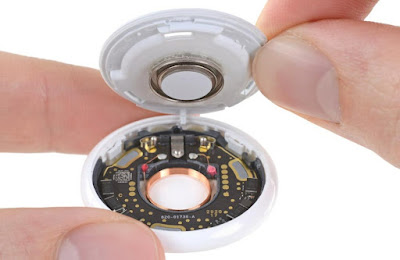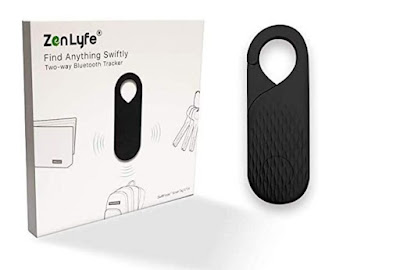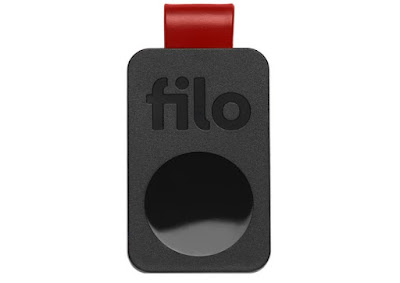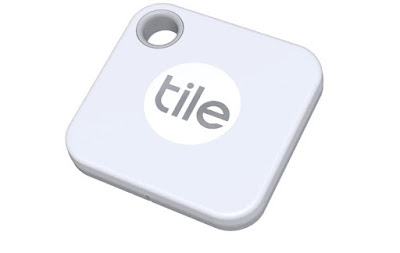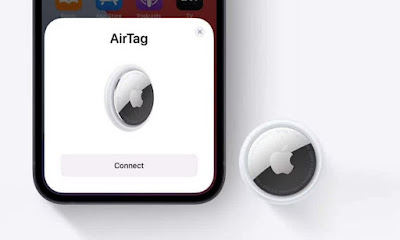
Among the numerous gadgets produced by Apple, the AirTag certainly stands out, a small oval-shaped device designed to easily find lost items and always have them at your side. Obviously, the design of this small device is striking, but even in a small body like that of the AirTag we find a concentration of technology that is worth investigating.
In the following chapters we will show you how an Apple AirTag works, how to connect it to an iPhone or an iPad and how to immediately trace the device once it is lost (perhaps after connecting it to a backpack, a bunch of keys or other). If we are interested in this type of device we will also show you which are the alternatives to the AirTag on which it is possible to bet.
READ ALSO -> Bluetooth keychain to find lost keys
How an Apple AirTag works
The Apple AirTag is a small, flattened circular disk equipped with a logic board, powered by a button battery (type CR2032). On this small logic board we find a chip for Bluetooth (dedicated to proximity localization), the U1 Apple chip to take advantage of the Ultra Wideband and Precise Position functions and an NFC chip for Lost mode.
These chips allow the device to function as a real “physical tag”, so as to be easily found with an iPhone or iPad. If the device is nearby (about 20 meters) it can be played with the internal speaker and found very easily; if the tag is far from us will take advantage of the worldwide network of Where’s (the search function of lost Apple devices) for localization, so as to find it in any part of the globe.
The Apple AirTag is therefore very useful for locating a bunch of keys, but it can be placed inside a bag, backpack or other objects we care about, perhaps using one of the tag holders sold by Apple itself or present in large quantities on Amazon.
How to connect it to iPhone or iPad
Connecting it to the iPhone or iPad is really very simple: once purchased, remove the plastic tab on the side (which internally blocks the battery contact), approach the AirTag to our iPhone or iPad and, as soon as the window appears. welcome, let’s press on Connect.
In the next screen we choose a name for the AirTag (“PC Bag” for example) and press the Continue button to register the AirTag on our Apple ID account. From this moment on, the device can be viewed from the app Where, opening the section Objects.
From the Objects section we can also open the summary screen of the AirTag (or one of the AirTags) and change the name, as well as check the battery status and the possible proximity of the device (if it is actually present near us).
How to track it in case of theft or loss
If we have lost an object to which an AirTag was connected or in which an AirTag was hidden, we can immediately try to locate it by opening the app Where, let’s tap on the menu Objects, select the lost AirTag and view its last position on the map.
If the AirTag is within range of the iPhone or the Find My network has recently identified it, we will immediately see the updated location, date and time under its name.
If the AirTag is out of range of the Apple device or any other device in the Find My network, you will see the last position, date and time recorded by the system. To receive a notification when the AirTag is within range of your device or is detected by the Where’s network, all we have to do is activate the voice Notify when found, available in the section Notifications.
The presence of other iPhones or iPads nearby is essential to be able to find lost items away from us: all iPhones and iPads that are turned on act as antennas for devices supported by the Find My app and allow you to quickly find an AirTag even if we are not physically present on site.
Obviously, the owners of iPhones or iPads that collaborate in the identification of the AirTag through the worldwide network Where is they do not know anything about the device, they cannot view it on their own Where is app and it is not possible to track it in any way (which is only possible with the Apple ID it is associated with).
If we find an AirTag on the street, it is better to bring it back to the nearest Apple center: it cannot be associated with a new Apple ID if the previous one is not dissociated, so we might as well bring it back to an Apple center (where it will certainly be traced thanks to the Where is app by the rightful owner).
Alternative all’Apple AirTag
Apple AirTag starts at 35 Euros, an altogether acceptable cost for a tracking device capable of interfacing with the world network created by Apple devices (with the Dov’è app).
If we look for a alternate tag we can take a look at the models on Amazon, which allow you to trace lost items through a dedicated localization app or through a localization system similar to the one visible on Apple.
The first model we can consider is the SwiftFinder Key finder (€ 25).
With this simple Bluetooth tag we can find lost items in the vicinity up to 50 meters and sound an alarm on the tag when we move away from the range of the registered phone. Through tag it is also possible to make the lost phone ring (even in silent mode) and program it as a key to trigger the camera.
A very nice tracing device is the FiloTag (25 €), born long before the arrival of the AirTag.
FiloTag is an Italian product that uses low-energy Bluetooth (Bluetooth LE) to hook up to the phone, so that lost devices can be found within a radius of 50 meters outdoors. If the tag goes out of range it starts ringing, as well as receiving an alert on the phone. We can always make the tag ring through a dedicated app, as well as locate the approximate location (based on the last actual connection to the mobile).
A valid alternative to the Apple AirTag is the Tile Mate (€ 25).
This small tag works via Bluetooth and can be used as a proximity locator up to 60 meters, a good compromise compared to the devices seen so far. If the tag goes out of range I emit a clear and loud sound, as well as show an alert notification on the dedicated app. With the Premium service we can also add support for Amazon Alexa and Google Home, so as to make the tag sound when we lose the keys in the house.
A tag very similar to the AirTag for functionality is undoubtedly the Samsung Galaxy SmartTag (30 €).
This Samsung signed tag uses Bluetooth to be able to locate nearby devices and, thanks to the sistema Samsung Find, takes advantage of the signals emitted by nearby Samsung phones to be able to identify the position of objects even when out of range, in a manner similar to Apple’s Where’s App.
Conclusions
Bluetooth tags have existed for many years but only with the arrival of Apple did they spread, thanks to the integration with the worldwide network Where is: even without a GPS sensor we can still locate a lost AirTag, using iPhones in operation around the world as “antennas” to pick up the signal and get an approximate location. The only tag that features similar functionality is the Samsung Galaxy SmartTag, while the others function as simple Bluetooth tags (visible on the map only if in the Bluetooth range, but they ring if they leave the same range).
If we want to use these tags as an additional anti-theft device for cars, we advise you to leave it alone and focus on More powerful and professional GPS trackers, so as to have the precise location of where the car is if lost or stolen.
Always on the subject of anti-theft, it is always advisable to activate the protection systems found on modern telephones, so you can quickly locate it and delete it remotely if necessary.

